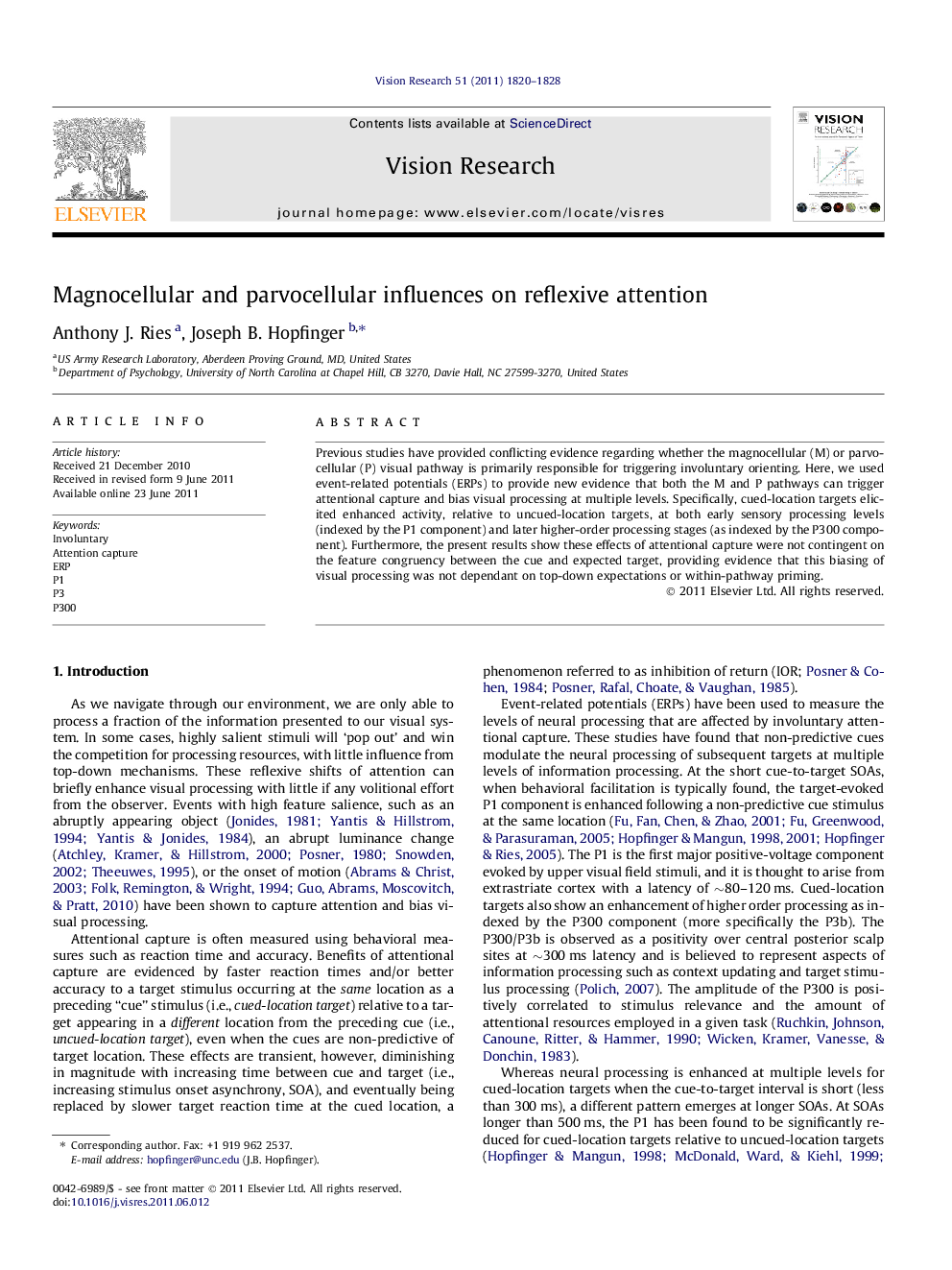| Article ID | Journal | Published Year | Pages | File Type |
|---|---|---|---|---|
| 4034098 | Vision Research | 2011 | 9 Pages |
Previous studies have provided conflicting evidence regarding whether the magnocellular (M) or parvocellular (P) visual pathway is primarily responsible for triggering involuntary orienting. Here, we used event-related potentials (ERPs) to provide new evidence that both the M and P pathways can trigger attentional capture and bias visual processing at multiple levels. Specifically, cued-location targets elicited enhanced activity, relative to uncued-location targets, at both early sensory processing levels (indexed by the P1 component) and later higher-order processing stages (as indexed by the P300 component). Furthermore, the present results show these effects of attentional capture were not contingent on the feature congruency between the cue and expected target, providing evidence that this biasing of visual processing was not dependant on top-down expectations or within-pathway priming.
► We show that magnocellular and parvocellular systems trigger attentional capture. ► This capture enhances both early sensory and later high-order neural processing. ► These enhancements are transient, occurring only at short cue to target intervals. ► These effects are not dependent on top-down control settings. ► These effects are not dependant on within-pathway priming.
